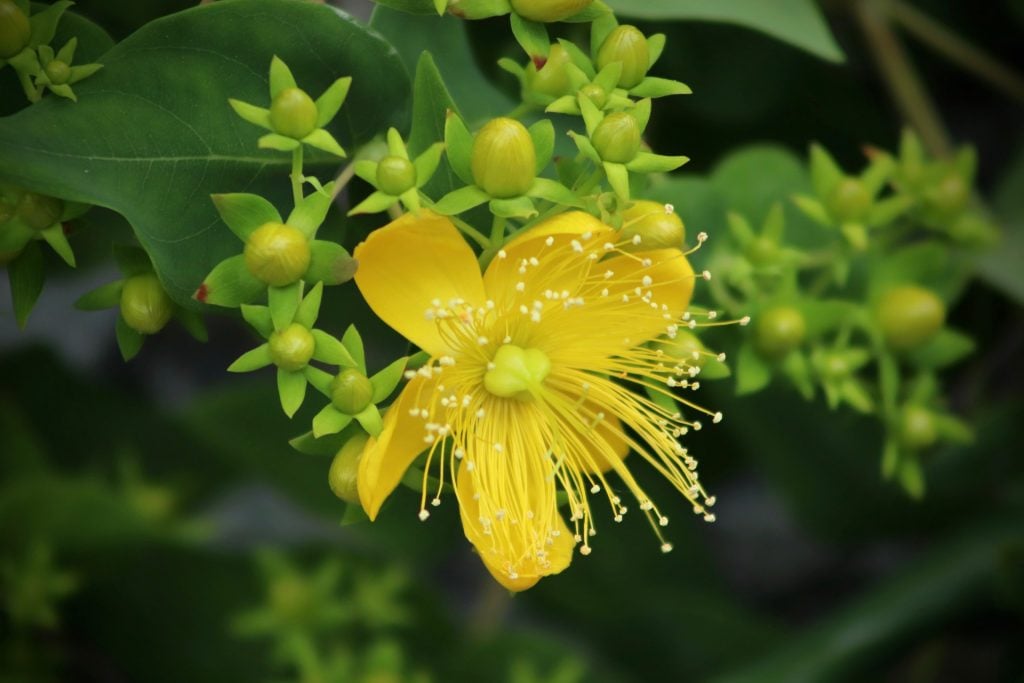St John’s wort (also known as Hypericum) is a shrubby perennial wildflower which can be found growing in uncultivated dry gravelly soil, woods, hedges, meadows and on roadsides.

There are many ancient superstitions regarding this plant and some legends dedicate it to Saint John the Baptist. It’s botanical name Hypericum perforatum is derived from the Greek, a reference to the belief that the herb was so obnoxious to evil spirits that a whiff of it would cause them to fly!
Swiss physician Paracelsus, who established the role of chemistry in medicine (1493-1541), was most impressed with its medicinal properties, speaking of it like a plant in which God had hidden a great wonderful secret. He advised his patients to place the herb under their pillows at night and to wear it around their neck in little bags.
St John’s wort is a valuable medicinal plant with an affinity for nerve endings and is used for many purposes. Primarily, its sedative and pain-reducing effect gives it a place in the treatment of nervous complaints such as neuralgia, neurosis, anxiety, tension, sleeplessness, hysteria and similar problems. Clinical trials have now shown that St John’s wort is as effective as some prescription antidepressants, but does not have the uncomfortable side effects often associated with them.
Also recommended for speech disorders, fitful sleep and sleepwalking, St John’s wort helps relieve neurosis in children and uterine cramping during menstruation. The calming properties of this herb make it useful in the treatment of bed-wetting, bladder troubles, diarrhoea and dysentery.
Besides drinking two cups of this tea daily, sitz and foot baths can be very beneficial. Used externally as a lotion, it has antiseptic properties and is invaluable for all wounds in preventing scratches, cuts, and punctures from becoming septic.
A much-valued remedy is St John’s wort oil. It is easily prepared using the flowers and olive oil, and has been used for centuries as a treatment for burns, wounds, sores, bruises and other skin problems. It also relieves sore backs, lumbago, abdominal pain, sciatica, rheumatism and glandular swelling. Even babies suffering from abdominal pain are easily soothed, by gently rubbing their tummies with this oil!
Find out how healthy skin and mucous membranes prevent absorption of microorganisms into the bloodstream in ASOHM’s Pains, Systems & Recovery Lesson 10 today!
